Ogmore-vale, Bwlch mountain, Afan Valley (30 miles)
Ogmore vale NCR 4
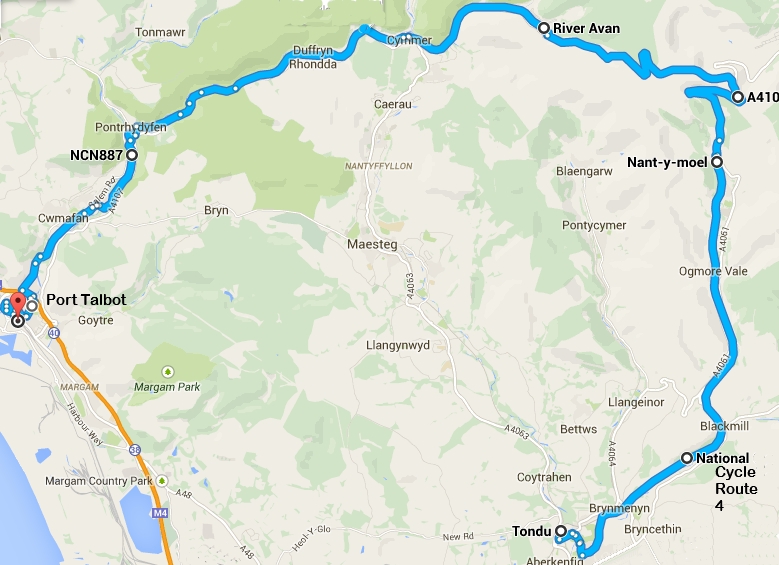 With a week off again, it was time to do a ride I’ve wanted to do for ages- Ogmore Vale and the Afan
valley. The first part of the cycle route is about eleven miles long rising to 500 feet above sea
level, but the track finishes at Nanty-y-moel and unless you turn around and ride back down, you have
to go over a massive mountain to get to my next desired route- The Afan Valley. But let’s not get ahead of
ourselves.
With a week off again, it was time to do a ride I’ve wanted to do for ages- Ogmore Vale and the Afan
valley. The first part of the cycle route is about eleven miles long rising to 500 feet above sea
level, but the track finishes at Nanty-y-moel and unless you turn around and ride back down, you have
to go over a massive mountain to get to my next desired route- The Afan Valley. But let’s not get ahead of
ourselves.
We caught the train to Tondu, today it’s a peaceful village, but it used to be a flourishing railway town, where once several thousand people were employed servicing the extensive railway junction. Hard won coal came from the Welsh Valleys and funnelled into Tondu junction, ready for distribution to Porthcawl docks and the industries of South Wales.
Before the ride, we decided to visit the Victorian ironworks, literally half a mile away from the station. Tondu Ironworks began production in 1836 and ceased in 1896. In 1946 the site became the regional headquarters for the National Coal Board, a role it served until 1986. Tondu Park Ironworks has an interesting series of preserved early coke ovens and lime kilns.
Shortly after the visit to the ironworks, we climbed back over the railway steps and headed for the NCR4, being December it was cold, the sun was bright, but it was low in the sky. Before the railway, Ogmore vale valley was sparsely populated with farming communities, the introduction of the railway after deep drift mines were sunk in the valley, injected growth, and prosperity into the Vale. Ogmore Vale was going to be the next Bourneville or Port sunlight community, it had schools, houses, shops built and had a classic workman’s hall which is now gone. The village's Gwalia Stores, built in 1880, remained unchanged through 100 years, it was dismantled brick by brick, and rebuilt in St Fagans National History Museum near Cardiff.
The route followed the Ogmore river and was enclosed by trees, at Lewistown the path opened up, exposing the old cemetery on the hillside. It has to be said that the scenery gave us a heavy heart, the tiny villages on this route looked like they'd never recovered from the loss of the mining industry in the eighties.
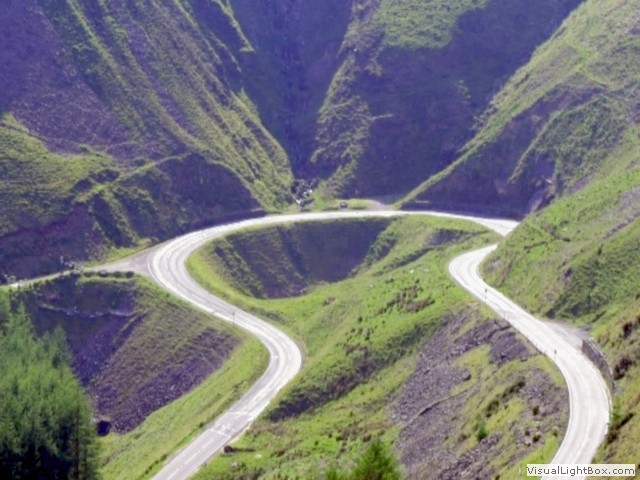 The end of the line and the end of NCR 4, there’s no station left at Nant-y-moel and the only way
forward is over the mighty Bwlch mountain. During the Depression of the 1920s, one relief scheme
was to build hairpin roads out of the dead-end Valleys, both to bring some work to the area and
open the various valleys out. We had a headwind much of the way up the pass, which changed to a
tail wind at the Keyhole. Ever since it was built, this roller-coaster of a road out of Nant-y-moel
has been a popular with cyclists, and if you ride up it, rumour has it, you have to have an ice
cream at the top. Apparently the same family have been selling them there since the thirties;
sadly there was no ice cream van when we were on the top, but the views were absolutely
outstanding. The Bwlch has one of the highest public road mountain passes in Wales, rising to
1800 feet above sea level. On the descent we freewheeled at 35 mph, until we went around another
hairpin and the speed instantly dropped to 17 mph, it was like a wall. With the wind chill, it
was defiantly well below zero, don’t underestimate the weather at the top, I had to stop to put
on an extra coat.
The end of the line and the end of NCR 4, there’s no station left at Nant-y-moel and the only way
forward is over the mighty Bwlch mountain. During the Depression of the 1920s, one relief scheme
was to build hairpin roads out of the dead-end Valleys, both to bring some work to the area and
open the various valleys out. We had a headwind much of the way up the pass, which changed to a
tail wind at the Keyhole. Ever since it was built, this roller-coaster of a road out of Nant-y-moel
has been a popular with cyclists, and if you ride up it, rumour has it, you have to have an ice
cream at the top. Apparently the same family have been selling them there since the thirties;
sadly there was no ice cream van when we were on the top, but the views were absolutely
outstanding. The Bwlch has one of the highest public road mountain passes in Wales, rising to
1800 feet above sea level. On the descent we freewheeled at 35 mph, until we went around another
hairpin and the speed instantly dropped to 17 mph, it was like a wall. With the wind chill, it
was defiantly well below zero, don’t underestimate the weather at the top, I had to stop to put
on an extra coat.
Afan Valley NCR 887
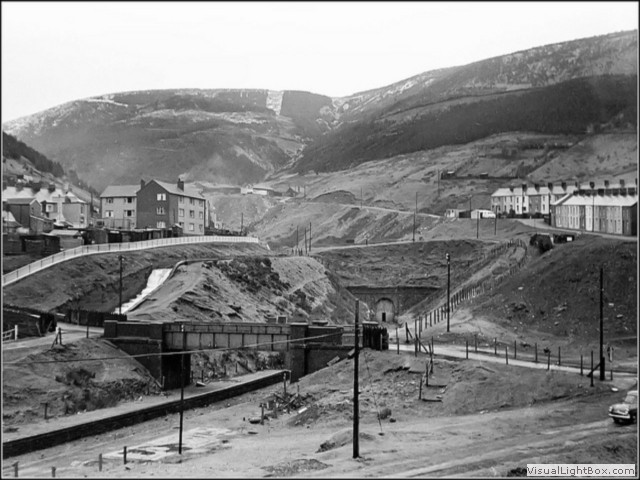 We came off the road at Blaengwynfi and onto NCR 887. The cycle path just appears down a
little slope, but in fact the railway track used to continue on and into a tunnel which went under the
mountain to Treeherbert. In 1890 the Rhondda Tunnel was constructed, and ran a distance of 3,443 yards,
it was the longest railway tunnel in Wales. It was primarily a freight line, but a passenger
service was introduced, when passenger numbers declined in the sixties the line was shut, the tunnel
remained intact until the early 70’s, until its current owners shut it, it has since been in-filled
at both ends.
We came off the road at Blaengwynfi and onto NCR 887. The cycle path just appears down a
little slope, but in fact the railway track used to continue on and into a tunnel which went under the
mountain to Treeherbert. In 1890 the Rhondda Tunnel was constructed, and ran a distance of 3,443 yards,
it was the longest railway tunnel in Wales. It was primarily a freight line, but a passenger
service was introduced, when passenger numbers declined in the sixties the line was shut, the tunnel
remained intact until the early 70’s, until its current owners shut it, it has since been in-filled
at both ends.
We came across Cymmer station, now turned into a public house, we had a well earned tea and warmed up for a bit. Just after Cymmer is an impressive wrought iron viaduct, now grade two listed. From here the old railway line descends all the way to Port Talbot, passing through well preserved Cynonville station. On the tarmac path we easily picked up speed, shadowed either side by beautiful mountains. We crossed the Pontrhydfen viaduct, high above the river Afan, famed as the birthplace of World renowned Welsh actor; Richard Burton. The trail becomes very disjointed around Cwmafan and heads onto the pavement of the B4286 road, and then dives back along the river. We’d recommend not following the cycle path at Port Talbot as it becomes confusing, possibly some signs have been altered. When we arrived at port Talbot Parkway station, it was being refurbished and was in a sorry state.
Was this one of my best rides? Probably not, but it was a thoroughly enjoyable ride. I’m glad it was sunny, but it was bloody freezing in early December, the upside to this; is the tracks would probably be overrun during the summer months with families of cyclists as 90% of this ride is off road.
-
Gallery
 Why not have a look at the gallery relating to this ride. Click the image or the title.
Why not have a look at the gallery relating to this ride. Click the image or the title. -
Tondu junction
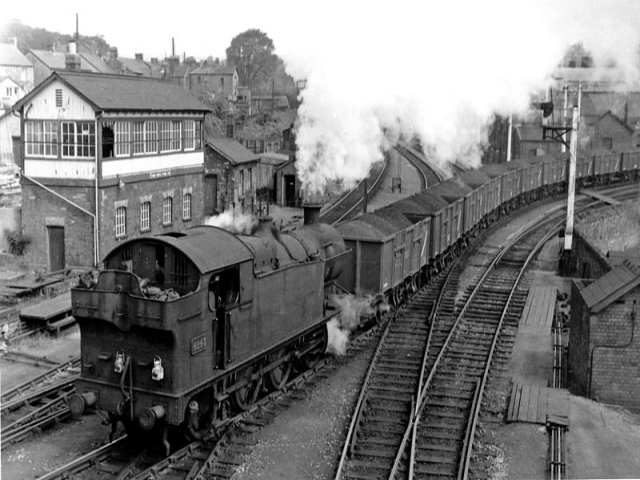
.
-
Tondu Victorian Ironworks
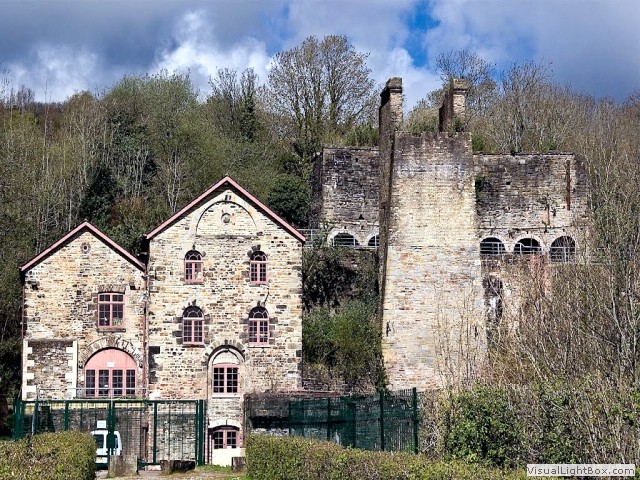 Tondu Ironworks was established in 1838 when Welsh iron was in great demand. The Ironworks are built
into the side of a hill, with ramps and gangways. The works still has many historic features
intact including a series of open grate furnaces.
Tondu Ironworks was established in 1838 when Welsh iron was in great demand. The Ironworks are built
into the side of a hill, with ramps and gangways. The works still has many historic features
intact including a series of open grate furnaces. -
Ogmore Vale Gwalia Stores
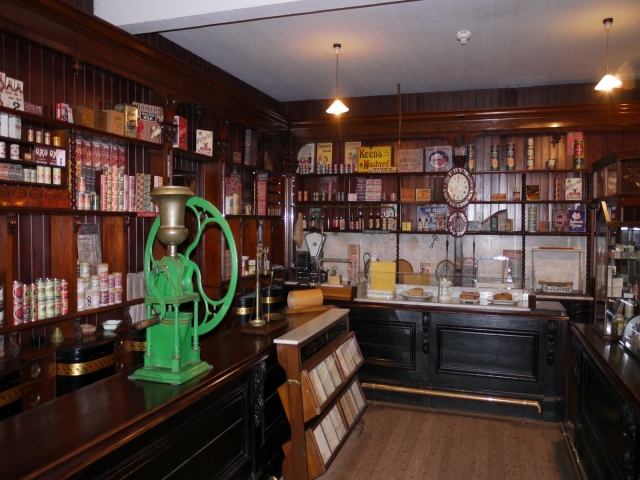 In 1880 William Llewellyn developed his grocery business by building this shop. By 1916, Gwalia Stores
comprised of a bakery, ironmongery, grocery, gentlemen's outfitters, chemist, and a section selling
animal feeds.
In 1880 William Llewellyn developed his grocery business by building this shop. By 1916, Gwalia Stores
comprised of a bakery, ironmongery, grocery, gentlemen's outfitters, chemist, and a section selling
animal feeds. -
Ogmore valley miners memorial
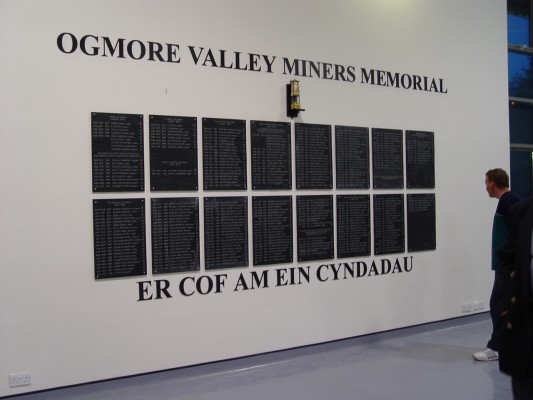 Displayed in Ogmore Vale Primary School is sixteen A2 sized slate plaques, laser etched with the names
of every man and boy killed in the collieries of the Ogmore Valley from 1865 to 1984. Which amounts to
over 250 people.
Displayed in Ogmore Vale Primary School is sixteen A2 sized slate plaques, laser etched with the names
of every man and boy killed in the collieries of the Ogmore Valley from 1865 to 1984. Which amounts to
over 250 people. -
Lynn Davies (MBE, CBE)
 He was born in Nantymoel in 1942, Davies became one of Great Britain's greatest athletes, wining an
Olympic gold in the long jump in Tokyo 1964. He is now President of UK Athletics and was part of the torch
lighting ceremony at the London 2012 games.
He was born in Nantymoel in 1942, Davies became one of Great Britain's greatest athletes, wining an
Olympic gold in the long jump in Tokyo 1964. He is now President of UK Athletics and was part of the torch
lighting ceremony at the London 2012 games. -
Great western hotel at Blaengwynfi
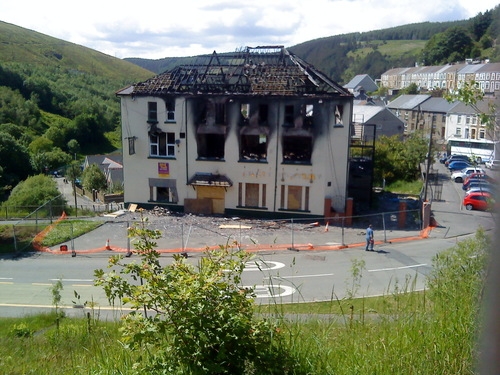 Blaengwynfi was obviously a strategic railway point as the Great western railway built a hotel in
its namesake. It was destroyed by fire in eighties.
Blaengwynfi was obviously a strategic railway point as the Great western railway built a hotel in
its namesake. It was destroyed by fire in eighties. -
Richard Burton in Pontrhydfen
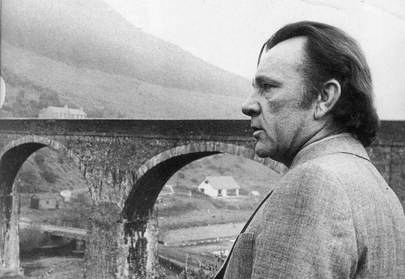 He was born Richard Walter Jenkins, the twelfth child of an impoverished coalminer. He later took the
stage name of Burton after his teacher. Burton won many acting awards and was nominated for seven
Oscars.
He was born Richard Walter Jenkins, the twelfth child of an impoverished coalminer. He later took the
stage name of Burton after his teacher. Burton won many acting awards and was nominated for seven
Oscars.


 Tondu Ironworks was established in 1838 when Welsh iron was in great demand. The Ironworks are built
into the side of a hill, with ramps and gangways. The works still has many historic features
intact including a series of open grate furnaces.
Tondu Ironworks was established in 1838 when Welsh iron was in great demand. The Ironworks are built
into the side of a hill, with ramps and gangways. The works still has many historic features
intact including a series of open grate furnaces.  In 1880 William Llewellyn developed his grocery business by building this shop. By 1916, Gwalia Stores
comprised of a bakery, ironmongery, grocery, gentlemen's outfitters, chemist, and a section selling
animal feeds.
In 1880 William Llewellyn developed his grocery business by building this shop. By 1916, Gwalia Stores
comprised of a bakery, ironmongery, grocery, gentlemen's outfitters, chemist, and a section selling
animal feeds.  Displayed in Ogmore Vale Primary School is sixteen A2 sized slate plaques, laser etched with the names
of every man and boy killed in the collieries of the Ogmore Valley from 1865 to 1984. Which amounts to
over 250 people.
Displayed in Ogmore Vale Primary School is sixteen A2 sized slate plaques, laser etched with the names
of every man and boy killed in the collieries of the Ogmore Valley from 1865 to 1984. Which amounts to
over 250 people.  He was born in Nantymoel in 1942, Davies became one of Great Britain's greatest athletes, wining an
Olympic gold in the long jump in Tokyo 1964. He is now President of UK Athletics and was part of the torch
lighting ceremony at the London 2012 games.
He was born in Nantymoel in 1942, Davies became one of Great Britain's greatest athletes, wining an
Olympic gold in the long jump in Tokyo 1964. He is now President of UK Athletics and was part of the torch
lighting ceremony at the London 2012 games.  Blaengwynfi was obviously a strategic railway point as the Great western railway built a hotel in
its namesake. It was destroyed by fire in eighties.
Blaengwynfi was obviously a strategic railway point as the Great western railway built a hotel in
its namesake. It was destroyed by fire in eighties.  He was born Richard Walter Jenkins, the twelfth child of an impoverished coalminer. He later took the
stage name of Burton after his teacher. Burton won many acting awards and was nominated for seven
Oscars.
He was born Richard Walter Jenkins, the twelfth child of an impoverished coalminer. He later took the
stage name of Burton after his teacher. Burton won many acting awards and was nominated for seven
Oscars.